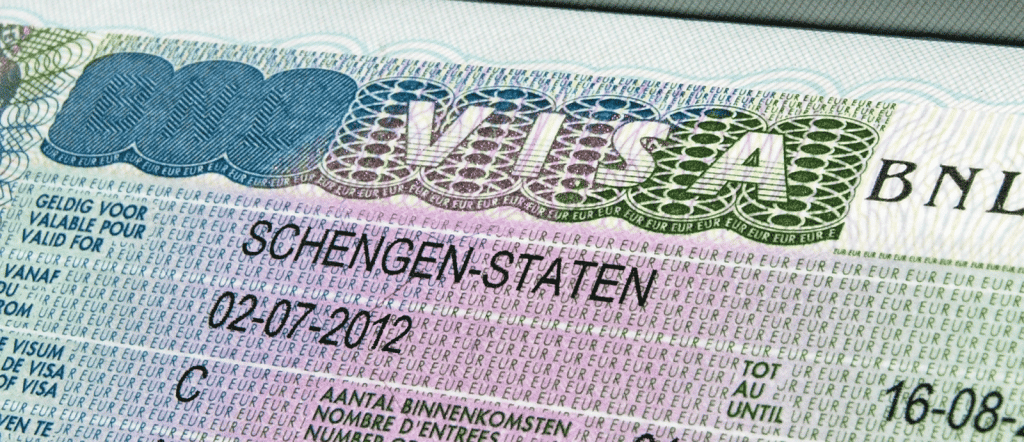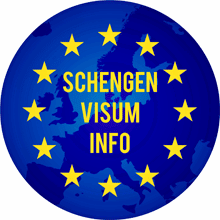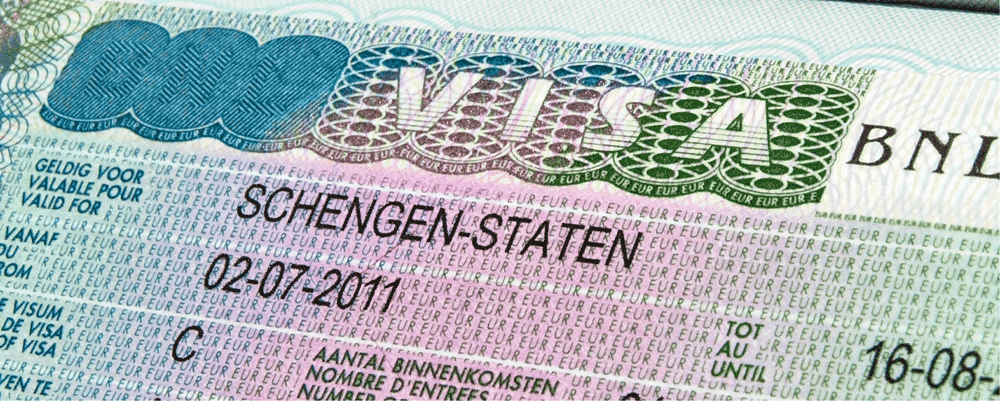Explanation about Schengen visas. What is it, what can you do with it and how do you get it?
A visa is an official permission to enter and stay in a country. A visa is usually issued by the embassy or consulate of the country the traveler is going to. The issuance of a Schengen visa is bound by rules. There are also different visas, the issue of which is determined by the purpose of the trip.
A Schengen visa is a visa that allows a person to legally travel to and within the Schengen zone, an area in Europe where the free movement of people is allowed. The Schengen visa is intended for tourists and other short-term travelers who want to travel to the Schengen zone for a stay of up to 90 days.
There are a number of things you should take into account when applying for a Schengen visa for the Netherlands. For example, you must demonstrate that you have enough money to pay for your stay in the Netherlands and that you have a valid return ticket. You must also demonstrate that you have a valid reason to travel to the Netherlands, such as a holiday, business trip or visiting family or friends.
Once you have a Schengen visa for the Netherlands, it is important to comply with the rules. For example, you may not stay in the Netherlands longer than your visa allows and you must comply with the laws of the country.
Conditions for a Schengen visa
The Schengen visa is issued by the embassy or consulate of one of the countries in the Schengen zone. To be eligible for a Schengen visa, a person must demonstrate that he or she sufficient financial resources to travel and stay in the Schengen zone, and that he or she does not pose a threat to public order, national security or public health of any country in the Schengen zone.
The Schengen visa is valid for the entire Schengen zone area, so a person with a Schengen visa can travel to any country in the Schengen area. However, the Schengen visa is only valid for one stay of up to 90 days in any 180-day period.
1 visa for 27 European countries
With a Schengen visa you can travel to and within the Schengen zone. This means that you can travel to any of the 27 countries in the Schengen zone with a Schengen visa without needing a separate visa.
A Schengen visa is intended for tourists and other short-term travelers who wish to travel to the Schengen zone for a maximum stay of 90 days in any 180-day period. With a Schengen visa you can travel freely within the Schengen zone and enjoy everything these countries have to offer, such as beautiful cities, cultural sights and natural landscapes. However, a Schengen visa is not residence permit and does not entitle you to work or study in the Schengen countries.
What is a short-stay Schengen visa?
A Schengen visa is actually nothing more than a sticker in the passport of foreign travelers visiting the Netherlands or other Schengen countries. Formally, the name of a Schengen visa is: 'Visa Short Stay Type C'. but the term 'Schengen visa' or 'Schengen visa' is somewhat easier.
A Schengen visa sticker in your passport gives access to the 26 Schengen Member States in Europe. You can travel through a large part of Europe with a Schengen visa without having to apply for a separate visa for each country.
A visa is a sticker that is stuck in the travel document (passport). A Schengen visa indicates that at the time of issue there is no objection to the entry of the foreign national for a short stay (maximum 90 days). The Dutch government always first checks whether you are eligible for a visa.
On the basis of the Schengen Implementation Agreement, which entered into force on 26 March 1995, the member countries in principle issue a 'common' visa (Schengen visa). Usually, the Schengen visa gives access to all countries in the Schengen area. In some cases, a so-called 'territorially restricted' visa may be issued that is only valid for a single country.
Is a Schengen visa a tourist visa?
The Short Stay Visa/Schengen Visa is often referred to as a tourist visa named. This is not quite correct. The visa is always issued for a specific purpose of stay. Tourism is just one example of such a purpose of stay. Other purposes of stay are: business, visiting family or friends, culture, sport, official, medical reasons, study, transit, airport transit and others.
Visa Policy
The Netherlands implements the European visa policy, which is set out in the EU Visa Code. The visa policy for the Schengen countries revolves around two important issues: who is required to have a visa and when is a visa application granted? The main points of the Schengen visa policy are:
- Citizens from Schengen countries and from other countries without a visa requirement may travel freely within the Schengen zone.
- Citizens of visa-requiring countries submit a visa application to one Schengen country to gain access to the entire Schengen zone.
- Schengen countries grant an application (or reject an application) on the basis of criteria jointly established by all countries in the Schengen zone.
- A holder of a Schengen visa can travel freely within the entire Schengen zone.
The 26 Schengen countries
The 26 Schengen countries are listed below. With a Schengen visa, the foreign national may travel freely in the following countries:
| Belgium | Denmark | Germany |
| Estonia | Finland | France |
| Greece | Hungary | Italy |
| Latvia | Liechtenstein | Lithuania |
| Luxembourg | Malta | The Netherlands |
| Norway | Austria | Poland |
| Portugal | Slovenia | Slovakia |
| Spain | Czech Republic | Iceland |
| Sweden | Switzerland | Croatia |
Note: The EU countries Bulgaria, Cyprus, Ireland, Croatia and Romania are not Schengen countries.
Hebrew do I need a Schengen visa for the Netherlands?
Whether you need a visa depends, among other things, on you nationality. View the list of visa-requiring countries. Do you have more than 1 nationality? Then the passport you are traveling with determines whether you need a visa for the Netherlands. Remember that if you need a visa, you also need one Schengen insurance must close.
Frequently asked questions and answers about a Schengen visa
A Schengen visa is a sticker in a foreigner's passport and this visa gives access to the 27 countries of the Schengen area, including the Netherlands. The visa holder may then stay in the Schengen area for a maximum of 90 days.
Stay in the Schengen area is limited to a maximum of 90 days in any 180-day period. This means that someone who has been in the Schengen area for 90 days cannot return until they have been outside the area for 90 days. The Schengen visa is, in principle, valid for 6 months from the date of issue. The stay in the Schengen area must take place within these 6 months. The return journey may therefore not take place after the expiry date.
The European Commission has one calculator developed to check whether someone's stay is still within 180 days.
If you want to work in the Netherlands during a short stay, your employer may require a work permit (TWV). The employer must request this from the UWV. This also applies if you do volunteer work or carry out an unpaid assignment. You may also need a citizen service number (BSN). The municipality issues this when you register in the Register of Non-Residents (RNI). For more information, visit the website of the municipality where you live/work or at www.rijksoverheid.nl.
You can only use one in very special situations Extend Schengen visa or free term. For example, if you are unable to leave the Netherlands due to serious illness or force majeure. Your total stay cannot exceed 90 days. You also need to have enough money to support yourself. Before submitting the request, you must make an appointment with a IND desk.
A 5-year visa for the Netherlands is a multiple-entry visa that is valid for 5 years. Like a visa-required foreigner has already been to the Netherlands a few times and returned to the country of origin without any problems, you can apply for a multiple-entry visa for 5 years. Such a visa has the advantage that you no longer have to apply for a visa each time you travel to the Netherlands. That means much more flexibility and you save a lot of costs for repeat visa applications.
A multiple entry visa (MEV) allows you to enter the Schengen area several times within the validity of the visa. Such a visa is usually valid for a minimum of 6 months and a maximum of 5 years. The maximum stay is 90 days in any period of 180 days, just like with a single visa. So if you stay in the Netherlands for 90 days, you also have to leave the Schengen area for 90 days.
When you traveled to the Netherlands with You cannot simply change this single-entry visa to a multiple-entry visa. This is only possible in situations of force majeure, humanitarian reasons, serious professional reasons or personal circumstances that have changed after you traveled to the Netherlands. Before submitting the request, you must make an appointment with a IND desk.
If you want to stay in the Netherlands for longer than 90 days, entering with a Schengen visa is not the right step. Someone who has entered with a Schengen visa/Visa for a short stay can never apply for a residence permit. You must then first return to your country of origin/residence to obtain a MVV (Provisional Residence Permit) to request.

Related articles:





